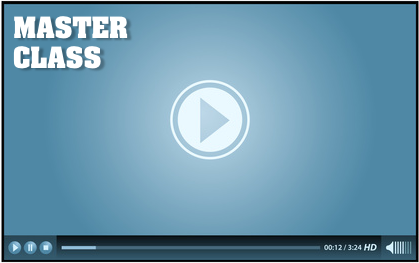Selling webinars: From lead generation to customer engagement


This guide is based on Mixergy’s interview with Lewis Howes.
Lewis Howes desperately needed to earn income after an injury ended his football career, so he built up a 35,000-person email list, taught over 500 webinars for small business owners, and made $1.7 million in a year. It was all done by using leads from LinkedIn and delivering engaging webinars, so we invited him to teach you how to do it.
Lewis teaches entrepreneurs how to grow their businesses with LinkedIn and webinars.
Here are the actionable highlights from the interview.
1. Create a product so you’ll have something to sell to webinar attendees
Lewis didn’t have a product ready when he taught his first webinar, so he offered the audience a three-hour training session on LinkedIn for $150.
- Take Action:
- Make a product using your experience and skills, and set a price for it.
2. Network on social media sites so you’ll have leads
Lewis started 10 LinkedIn groups and exported the group members’ email addresses, and he built a 35,000-person email list and promoted his webinars to the list.
- Take Action:
- Open accounts on sites like LinkedIn and Facebook, interact with other site members, and ask them to opt in to your email list or to give you their contact information in exchange for an email newsletter.
3. Recall life experiences that will motivate you to make every webinar a success
Lewis was chosen last for a dodgeball team as a kid, and that gave him the determination to be number one so that now when he teaches a webinar, he tries to make it the best webinar the attendees have ever seen.
- Take Action:
- Think of events in your life that have motivated you to work hard, and use them to inspire yourself when you prepare a new course or presentation.
4. Entertain your audience so they’ll want to listen to you again and again
Lewis tells jokes and kids around with his business partner during webinars, and the entertaining atmosphere kept one woman coming back to the webinar for a year and a half until she finally bought a product.
- Take Action:
- Tell new jokes in every webinar, add funny pictures to your slides, and lighten up your presentation with friendly banter.
5. Make a fallback plan so you’ll know what to do if something goes wrong
Lewis should have planned for one guest host to call his phone if the audio in the webinar software didn’t work, but he didn’t so when the audience couldn’t hear the guest, he had to reschedule the webinar.
- Take Action:
- A few days before a webinar, do a practice run of the upcoming session, and write down what steps you’ll take if something malfunctions.
6. Ask questions so your audience will feel engaged
Ten minutes before a webinar starts, Lewis asks attendees to type in their city, and he asks them to vote on polls several times throughout the webinar.
- Take Action:
- Ask attendees to type in something about themselves on the webinar control panel, and allow them to respond to polls and give you feedback at different points in your presentation.
Want to make sure you get results?
Watch the full interview now!
Written by Sarah Brodsky, based on production notes by Jeremy Weisz